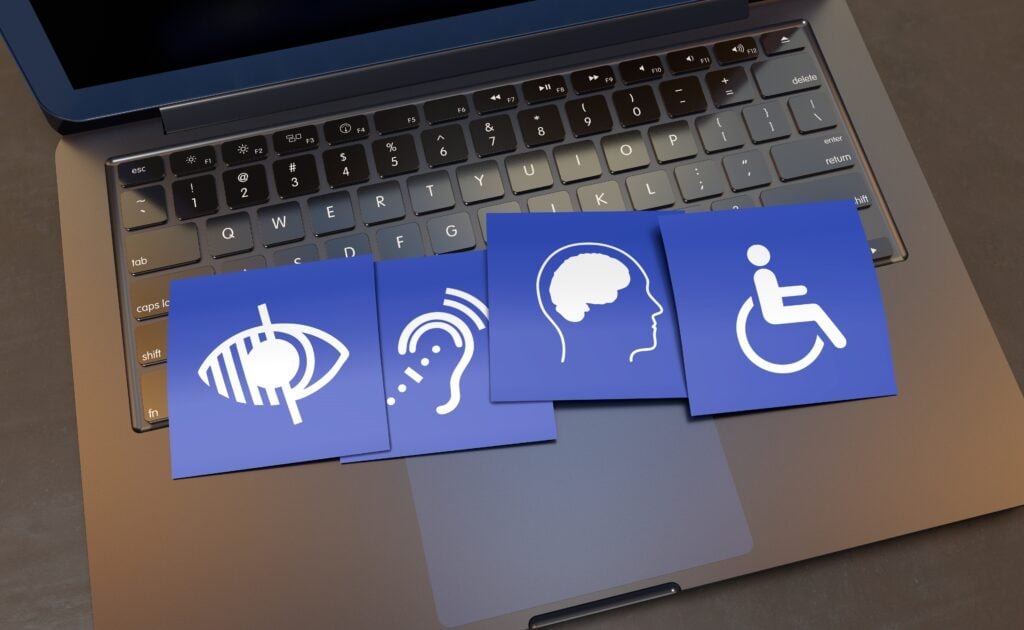When building digital products, it’s easy to focus solely on aesthetics, performance, and features. But there’s one critical element that sometimes gets overlooked: accessibility. At its core, accessibility means designing web and mobile applications that can be used by everyone, including people with disabilities. And today, creating accessible digital experiences isn’t just the right thing to do—it’s smart business.
What Is Accessibility in Design?
Accessibility refers to how easily people with a range of abilities and disabilities can navigate and interact with your digital product. This includes users with visual impairments, hearing loss, limited mobility, cognitive disabilities, or even temporary limitations such as a broken arm or poor internet connection.
Creating accessible apps means ensuring users can:
- Navigate with a keyboard, voice command, or screen reader
- Understand content clearly and easily
- Receive information in multiple formats (text, audio, visuals)
- Use forms, buttons, and interactive features without barriers
Why It Matters More Than Ever
Globally, over 1 billion people live with some form of disability. In the United States alone, nearly 1 in 4 adults has a disability. That’s a significant percentage of users who may face barriers if your app or website isn’t accessible.
Accessibility isn’t just about serving those users, either. It’s also about meeting legal standards. In the U.S., the Americans with Disabilities Act (ADA) and Section 508 of the Rehabilitation Act lay out requirements for accessible digital services. Similar regulations exist globally, and failure to comply can result in lawsuits, fines, or public backlash.
Key Guidelines to Follow
To ensure accessibility, developers and designers should follow the Web Content Accessibility Guidelines (WCAG). These are globally accepted standards that focus on four principles: Perceivable, Operable, Understandable, and Robust (POUR).
Here are a few examples:
- Use high-contrast colors for text and backgrounds
- Provide alt text for all images
- Ensure all interactive elements are keyboard navigable
- Include captions or transcripts for audio and video content
- Use proper HTML semantic elements for screen readers
Building Accessibility from the Ground Up
Retroactively adding accessibility features to an app is often expensive and complex. It’s more effective to build accessibility into your workflow from the beginning.
At FocustApps, we integrate accessibility from the planning stages of every project. Our designers use inclusive design principles to ensure interfaces are user-friendly for a wide range of users. Our developers write clean, semantic code that works well with assistive technologies. And we routinely test our work against WCAG criteria to make sure nothing slips through the cracks.
Benefits Beyond Compliance
Aside from meeting legal requirements and ethical expectations, accessible apps often perform better overall. Consider these benefits:
- Better SEO: Search engines reward clean, semantic code, proper alt text, and fast load times—hallmarks of accessible design.
- Improved UX: Accessibility principles overlap with good design in general. For instance, easy navigation and clear labeling help all users, not just those with disabilities.
- Wider audience reach: The more inclusive your design, the broader your potential user base becomes.
Accessibility Tools We Use
We rely on a mix of manual testing and automated tools to validate accessibility. Some of the tools in our toolbox include:
- Axe DevTools
- Lighthouse (Google Chrome)
- NVDA and VoiceOver (screen readers)
- Keyboard-only testing protocols
These tools help catch missing labels, poor color contrast, and other common issues that might hinder usability.
Recap
Accessibility isn’t a buzzword or a checkbox. It’s a mindset. By building with accessibility in mind, you’re making your product better for everyone. And in today’s competitive landscape, inclusive design isn’t just good ethics—it’s good business.
If you’re ready to build an accessible web or mobile app, the team at FocustApps is here to help. Let’s create something that works for everyone.


